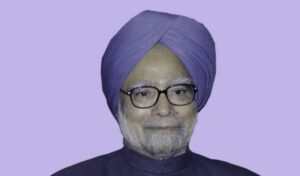
RBI hikes the policy repo rate by 50 basis points, to 5.90% as inflation inches up to 7.0% in August from 6.7% in July 2022
Mumbai: The Reserve Bank of India (RBI) today projected 7.0 per cent growth for the Indian economy for 2022-23 with Q2 at 6.3 per cent; Q3 at 4.6 per cent; and Q4:2022-23 at 4.6 per cent, with risks broadly balanced.
The growth for Q1 of 2023-24 is projected at 7.2 per cent. Against the current challenging global environment, economic activity in India remains stable, RBI Governor Shaktikanta Das stated today.
“While real GDP in the first quarter of this year turned out to be lower than expectations, it is perhaps the highest among major global economies,” he said. According to him, despite this unsettling global environment, the Indian economy continues to be resilient. “There is macroeconomic stability. The financial system remains intact, with improved performance parameters. The country has withstood the shocks from COVID-19 and the conflict in Ukraine. Our journey over the last two and half years, our steely resolve in dealing with the various challenges gives us the confidence to deal with the new storm that we are confronted with,” he stated.
While inflation inched up to 7.0 per cent in August from 6.7 per cent in July 2022, the RBI Governor attributed it to the global geopolitical developments, which were weighing heavily on the domestic inflation trajectory. He though claimed that acute imported inflation pressures felt at the beginning of the financial year have eased but remain elevated across food and energy items.
Das said that monetary policy has to carry forward its calibrated action on policy rates and liquidity conditions consistent with the evolving inflation growth dynamics. It must remain alert and nimble, he stated.
Considering the prevailing adverse global environment, and “uncomfortably” high inflation level, the Reserve Bank of India today hiked the policy repo rate by 50 basis points, to 5.90%. Consequently, the standing deposit facility (SDF) rate stands adjusted to 5.65% and the marginal standing facility (MSF) rate and the Bank Rate to 6.15%.
The Monetary Policy Committee decided to remain focused on the withdrawal of accommodation to ensure that inflation remains within the target going forward, while supporting growth, stated RBI Governor Shaktikanta Das.
The repo rate is the rate at which the Reserve Bank of India lends money to commercial banks.
Additional Measures
The RBI Governor announced a series of four additional measures, as given below.
1. Discussion paper on Expected Loss-Based Approach to be released for loan-loss provisioning by banks
Banks currently follow the incurred-loss approach, where provisions are made after the stress has actually materialized, this is to be replaced by a more prudent approach which requires banks to make provisions based on an assessment of probable losses.
2. Discussion paper on the securitization of Stressed Assets Framework (SSAF) to be released
A revised framework for securitization of stressed assets was issued in September 2021. It has now been decided to introduce a framework for securitization of stressed assets, this will provide an alternate mechanism for securitization of NPAs in addition to the existing ARC route.
3. Internet banking facility for customers of Regional Rural Banks
RRBs are currently allowed to provide internet banking facilities to customers subject to fulfilment of certain criteria, to spread digital banking in rural areas. These criteria are being rationalized, and revised guidelines are to be issued separately.
4. Regulation of offline payment aggregators
Online Payment Aggregators (PAs) have been brought under the purview of RBI regulations since March 2020. It is now proposed to extend these regulations to offline PAs, who handle proximity/ face-to-face transactions. This measure is expected to bring in regulatory synergy and convergence on data standards.
– global bihari bureau





